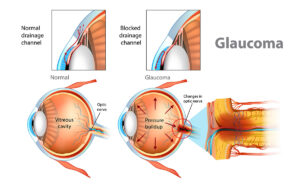Is it possible for a single vision correction procedure to be effective for people of all ages? Refractive Lens Exchange (RLE) is a surgical technique that might just fit the bill. This post from Anaheim Eye will delve into how RLE can enhance vision, regardless of age, and provide practical insights into whether this procedure might be the right choice for you. By understanding the versatility and effectiveness of RLE, you’ll be equipped to make an informed decision about your eye care needs.
Understanding RLE
What is Refractive Lens Exchange? RLE involves the removal of the eye’s natural lens and replacing it with an artificial intraocular lens (IOL). This procedure is typically sought by individuals suffering from presbyopia or extreme farsightedness, for whom traditional refractive surgeries like LASIK might not be advisable.
- Procedure Overview: Performed under local anesthesia, RLE takes about 15 minutes per eye. It’s similar to cataract surgery, but aimed primarily at correcting refractive errors rather than just removing cataracts.
- Benefits Across Ages: RLE can be particularly beneficial as it addresses both the need for distance glasses and reading glasses, a common requirement as people age.
- Considerations: While the surgery is generally safe, potential risks include retinal detachment and posterior capsule opacification, which might require further treatment.
RLE’s Effectiveness by Age Group
Children and Young Adults
While RLE is generally not recommended for children and young adults due to their evolving eye structures, it can be a consideration for those over 21 who have stable vision but are unsuitable for other forms of refractive surgery.
- Middle-Aged Adults: For individuals in their 40s and 50s, RLE can be a game-changer. As the eye ages, the lens hardens and becomes less flexible, leading to difficulties in reading or seeing objects up close—a condition known as presbyopia. RLE addresses this issue effectively.
- Seniors: In seniors, RLE not only enhances vision but also prevents the possibility of cataracts, as the artificial lens implanted will not develop the cloudiness typical of natural lenses.
Comparing RLE with Other Vision Correction Methods
LASIK vs. RLE
Comparing RLE to LASIK, another popular vision correction method, reveals some clear distinctions. LASIK reshapes the cornea to correct vision, which is effective for a broader range of refractive errors but is not suitable for everyone, especially those with thin corneas or presbyopia.
- Cataracts Surgery: While both surgeries involve replacing the eye’s lens, cataracts surgery is specifically aimed at removing a cloudy lens, whereas RLE is performed to correct refractive errors before cataracts develop.
- Benefits for All Ages: RLE can be particularly advantageous for older adults who might not be candidates for LASIK but still seek independence from glasses.
Conclusion
RLE stands out as a versatile and effective solution to enhance vision across various age groups. It offers a significant benefit for middle-aged and older adults by addressing both presbyopia and preventing cataracts. Anaheim Eye is dedicated to providing advanced, personalized eye care and can help determine if RLE is the best option for you. We encourage you to consult with our specialists and explore additional resources on our website to learn more about your vision correction options.
FAQ’s about RLE
Is RLE safe for everyone?
RLE is considered safe for most adults, particularly those over 21 with stable vision who are not candidates for LASIK. However, individual risks can vary, and a consultation with an eye care professional is essential.
How long does it take to recover from RLE surgery?
Recovery from RLE typically involves a few days to several weeks for visual stabilization, though most patients notice an immediate improvement in their vision.
Can RLE completely eliminate the need for glasses?
Many patients will experience significant improvements and may not require glasses for most activities. However, some might need reading glasses due to factors like light conditions or detailed close-up work.
How does RLE prevent cataracts?
By replacing the eye’s natural lens with a synthetic one, RLE effectively eliminates the chance of developing cataracts in that lens, as artificial lenses do not cloud like natural lenses.
By exploring the potential of RLE to enhance vision across different age groups, you’re taking a proactive step towards better eye health and clearer vision.




